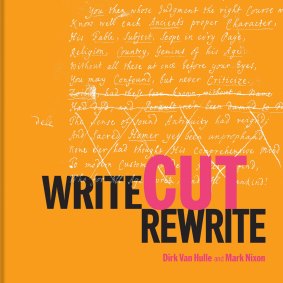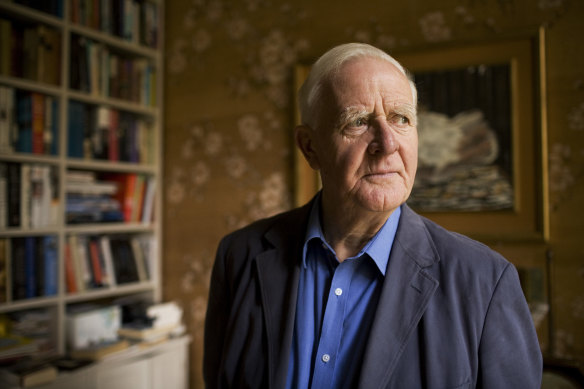

WRITING
Write, Cut, Rewrite: The Cutting Room Floor of Modern Literature
Dirk Van Hulle & Mark Nixon
Bodleian Library, $79.99
“I do, I undo and I redo”. The struggle and toil of the creative process outlined by visual artist Louise Bourgeois applies as much to literature as to any other art form. Some authors, notably Samuel Beckett, incorporated erasure into their finished work – Beckett’s term for the practice is decomposition.
This fascinating book, which draws largely on manuscripts held at the Bodleian Library in Oxford, illustrates the sometimes tortuous paths taken by leading authors to produce works that in their published version are venerated as literary classics.
Before printing was invented, all writing took manuscript form. “Keeping one’s manuscripts is a relatively recent phenomenon,” write the authors, who are experts in bibliography and modern literature. “It also appears somewhat gendered.”
Fortunately, some of Jane Austen’s discarded manuscripts survive, allowing us, for instance, to see an alternative ending to Persuasion and work Austen did on her abandoned novel, The Watsons. “Whatever reason Austen had to abandon the novel fragment,” note the authors, “she did not throw it away.” Perhaps Austen took the view that in writing there are many false starts yet nothing is ever wasted.
Before the instant editing enabled by computers, authors like J.R.R. Tolkien could write first in pencil and then overwrite in ink. When Tolkien was imagining a landscape, he would do a sketch on the page before trying to describe it. Authors could also literally cut and paste their manuscripts. The book includes examples of poems by writers such as Christina Rossetti and W.H. Auden in which whole sections of text in their notebooks have been scissored or torn out. In the case of the young Auden, so many pages were being ripped out that his mother tried to take the poems away before her son had a chance to bin them.
Of course, it is possible to add material to the manuscript by cutting and pasting. Mary Shelley needed a description of a mountainous landscape for her novel Frankenstein, and found an appropriate passage written in her husband Percy’s travel journal. The piece of text was duly removed and repurposed. The Frankenstein manuscripts are also invaluable in reconstructing the author’s intentions after the ending was changed. The original ending is now restored in modern editions of the novel.

John le Carré took nearly six months to settle on the opening line of Tinker Tailor Soldier Spy.Credit: NYT
Today little of what we do in life goes unrecorded. Keystroke-logging software can be used to document the creation of a piece of writing. Contemporary writers who have agreed to have spyware installed to track their work include Franny Choi and Craig M. Taylor. The latter reported that knowing his writing process was being observed made him get on with his novel: “Somehow the writing felt collaborative, not only because the software was recording me, but also because of the digital curation team who were taking the data.”



























